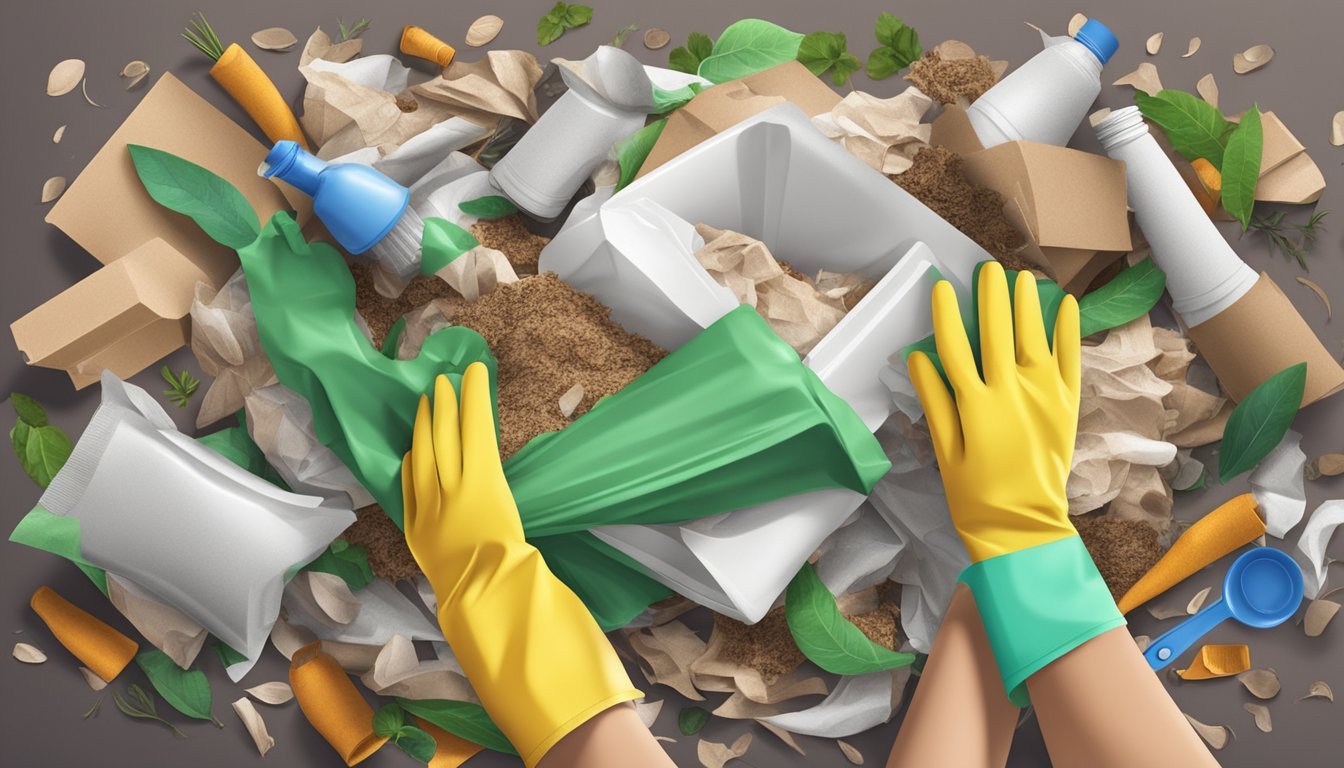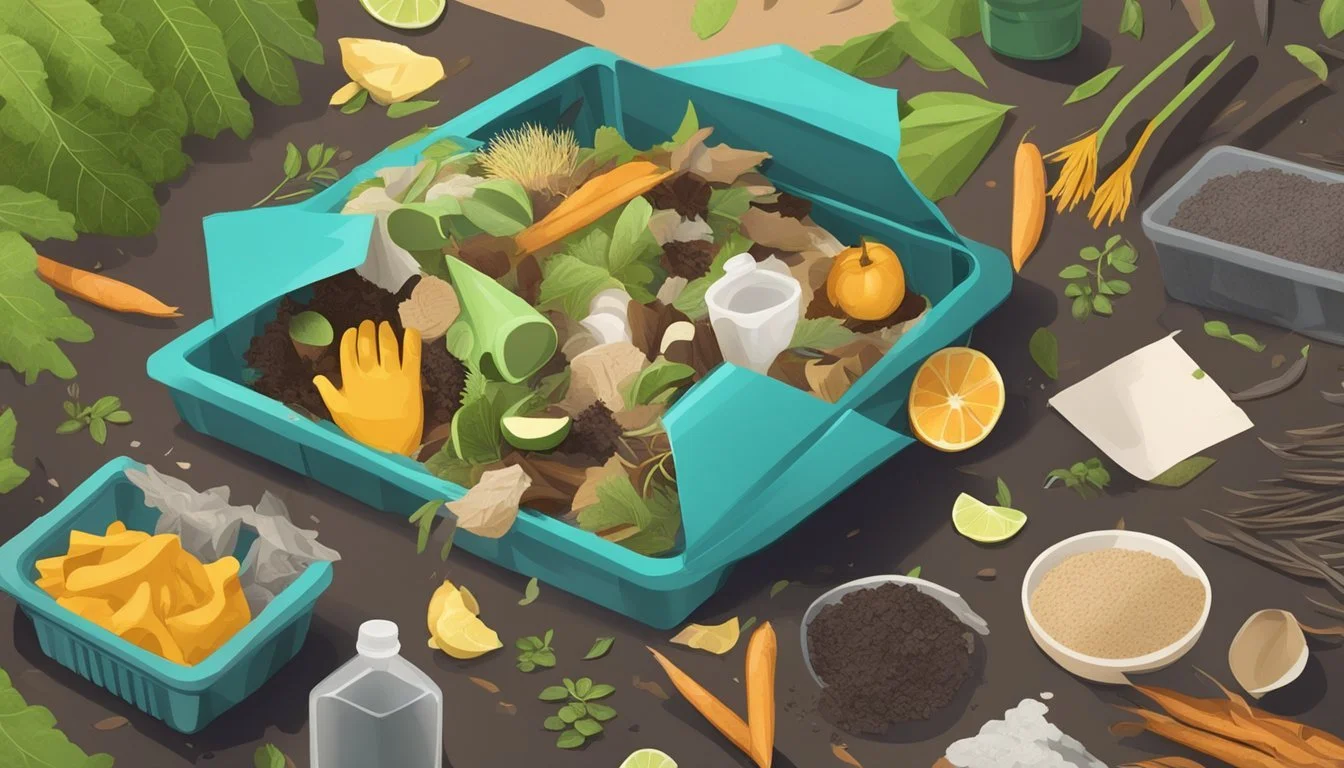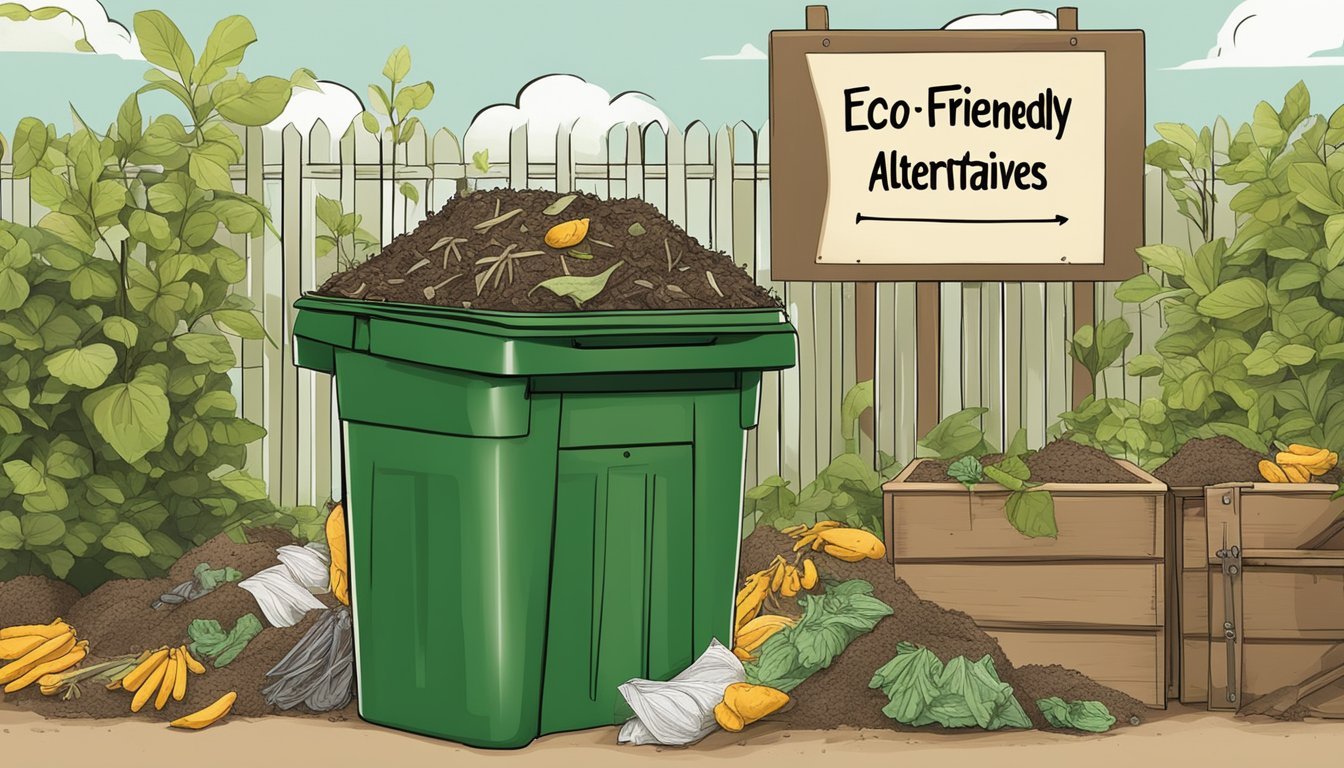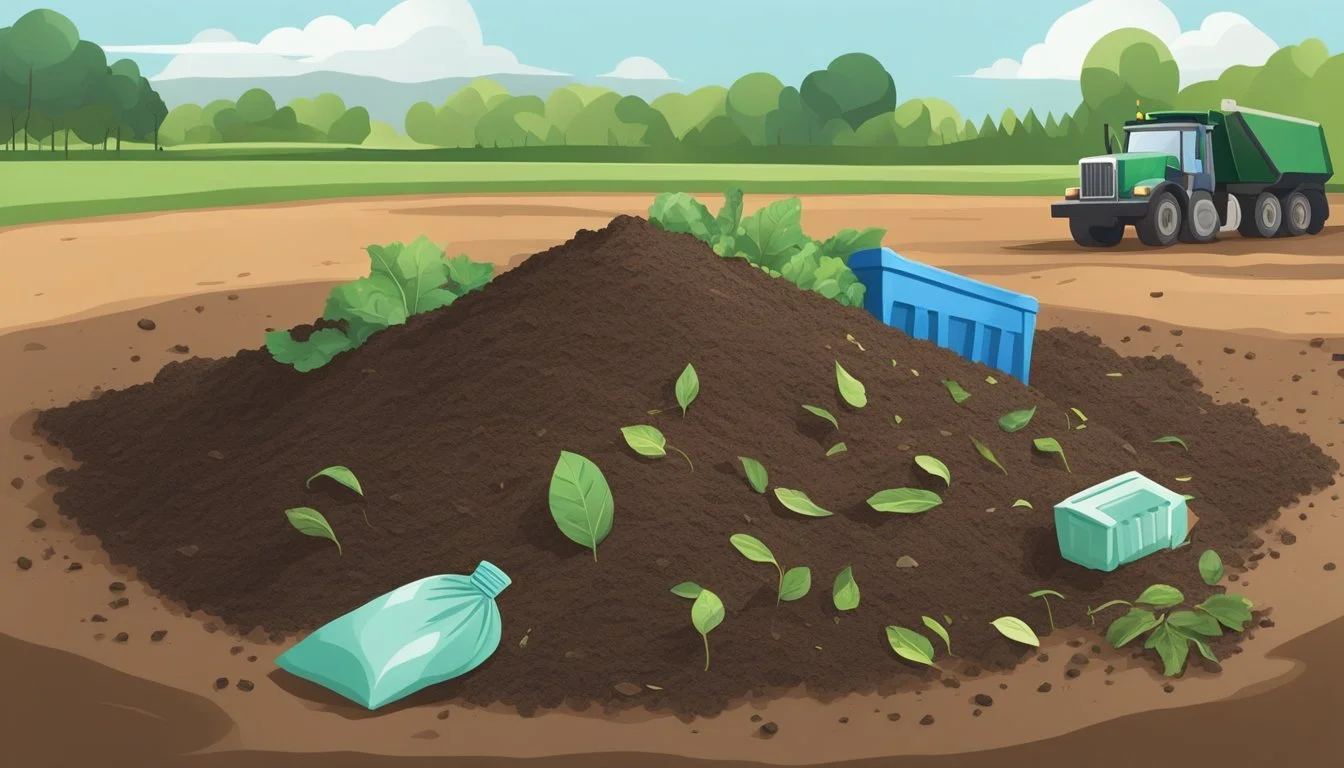Can You Compost Rubber Gloves?
Dissecting the Biodegradability Debate
Composting is a practice that turns organic waste into nutrient-rich soil, beneficial for the environment and gardening. As individuals look for ways to reduce waste and support sustainability, questions arise about what materials can be composted, particularly when it comes to items such as rubber gloves. Rubber gloves are commonly used for a variety of tasks, from household cleaning to medical procedures, creating a significant amount of waste that potentially ends up in landfills.
Rubber gloves, depending on their composition, could be a viable addition to the compost pile. Natural rubber gloves, made from the sap of rubber trees, contain organic ingredients that decompose under the right conditions. They offer an advantage as compostable items, provided that the composting environment has microbes capable of breaking down the rubber. This composting process can turn used gloves into valuable organic material that enriches the soil and minimizes harmful waste.
While composting rubber gloves seems to be an eco-friendly practice, not all rubber gloves are created equal, and this is key to determining their suitability for composting. It is crucial to distinguish between gloves made from natural rubber and synthetic materials. The compostability of rubber gloves depends on whether they are free from additional chemicals and materials that might be harmful to the composting process and the environment. Consumers need to verify that the rubber gloves being composted are indeed natural and have not been treated with other substances that would impede the breakdown process or introduce toxins into the compost.
Types of Rubber Gloves
When exploring the compostability of rubber gloves, it is crucial to understand the different types available on the market, which vary in material composition and environmental impact.
Natural Rubber Gloves
Natural rubber gloves, often made from latex, are derived from the sap of rubber trees. They are flexible, comfortable, and provide a high level of touch sensitivity, making them suitable for various applications. Although natural latex is a renewable resource, these gloves can take a long time to biodegrade due to additional chemicals added for strength and flexibility. Individuals with a latex allergy may need to avoid this type, as it can cause allergic reactions.
Nitrile Gloves
Nitrile gloves are a popular latex-free alternative, made from synthetic rubber. They are resistant to oils, chemicals, and punctures, and are used extensively in medical, automotive, and food industries. While traditional nitrile gloves are not biodegradable, recent advancements have led to the development of biodegradable nitrile options designed to break down more quickly in industrial compost facilities.
Vinyl and Other Synthetic Rubber Gloves
Vinyl gloves, made from PVC (polyvinyl chloride), and other synthetic rubber gloves like synthetic latex, are heavily used for their low cost and latex-free composition. These types of gloves are generally not biodegradable or compostable. Due to their synthetic nature, they last much longer in landfills compared to their natural counterparts, and thus are less environmentally friendly. However, they serve as an essential alternative for those with latex allergies.
Composting Fundamentals
Understanding the process of biodegradation and recognizing eco-friendly materials are essential for effective composting. It's important to know the environmental benefits and potential impacts involved.
Biodegradation Process
Biodegradation is the breakdown of organic materials by microorganisms. Compost plays a crucial role as it transforms biodegradable materials into nutrient-rich soil. For an item to be compostable, it must break down in a composting environment within a specific timeframe, typically a few months to a couple of years. This process requires the right balance of greens, which are nitrogen-rich materials like grass and food scraps, and browns, which are carbon-rich materials like leaves and branches.
Microorganisms such as bacteria and fungi are responsible for biodegradation.
Conditions necessary for composting include moisture, oxygen, and an optimal temperature.
Environmental Considerations
Composting is an eco-friendly alternative to landfill disposal, reducing the environmental impact on landfills, oceans, and wildlife. By composting, greenhouse gas emissions can be minimized since organic waste in landfills generates methane, a potent greenhouse gas. Composting at a composting facility or in a compost bin at home is a key component of a zero waste lifestyle and can contribute to a healthier planet.
It diverts waste from landfills, which are often overburdened.
Composting supports the natural cycle of nutrients by returning them to the soil.
Compostable Materials
Only materials classified as biodegradable or compostable should be added to compost. Plant-based materials are the most commonly composted items. However, the compostability of rubber gloves depends on their materials. If they are made from natural rubber and free from non-biodegradable additives, they may be considered. Most conventional rubber gloves, however, are not suitable for compost because they do not biodegrade efficiently and may contain additives harmful to the environmental balance of the compost pile.
Items like leaves, grass clippings, fruit scraps, and vegetable peels are ideal for composting.
Certain products labeled as "compostable," such as specific types of gloves, may be included if they meet appropriate industrial or home composting standards.
The Challenge with Rubber Gloves
Rubber gloves pose significant challenges when it comes to sustainable disposal—a dilemma that touches upon their decomposition in landfills, potential for toxicity and contamination, and the confusion between recycling and composting processes.
Decomposition in Landfills
Rubber gloves, particularly those made from synthetic rubber, have a slow decomposition rate in landfills. They can take decades to break down, contributing to the burgeoning waste problem. In the confined environment of a landfill, rubber gloves are less likely to decompose efficiently due to the lack of necessary conditions found in compost pits such as oxygen, moisture, and microbes that facilitate decomposition.
Toxicity and Contamination
When considering composting rubber gloves, the release of toxic substances is a major concern. As rubber breaks down, it can leach harmful chemicals into the soil, which may contribute to environmental contamination. These substances include but are not limited to sulfur, or other additives incorporated during the manufacturing process of synthetic rubber gloves, which can be detrimental to the quality of compost and the health of the soil.
Recycling Versus Composting
The debate over recycling rubber gloves versus composting them is ongoing. While some rubber materials can be recycled, not all recycling facilities accept rubber gloves, and those that do may not have the means to fully prevent toxins from entering the ecosystem. Conversely, compostable gloves, made from materials designed to break down in compost conditions, offer a more sustainable solution than traditional non-compostable rubber gloves. However, even compostable gloves should be used conscientiously, as not all compost systems can handle these materials and they may still produce microplastics as they degrade.
Thus, the end-of-life disposal of rubber gloves is not as straightforward as one might hope, with sustainability a key concern and the need for clear distinction between truly compostable materials and those merely labeled as such is critical for informed disposal.
Eco-Friendly Alternatives
In the pursuit of reducing environmental impact, there are sustainable options available for individuals seeking to replace traditional rubber gloves with eco-friendlier alternatives. These options prioritize biodegradability, reusability, and recyclability.
Biodegradable and Compostable Glove Options
Biodegradable gloves are a viable option for those looking to reduce their carbon footprint. Gloves utilizing Eco Best Technology (EBT) are designed to biodegrade in landfills. Unlike conventional gloves, compostable gloves are made from biodegradable materials such as PLA (polylactic acid), which can decompose under the right composting conditions. These gloves are better for the environment as they can break down into natural compounds, reducing waste significantly.
Reusable Gloves and Sustainability
Reusable gloves are a cost-effective and sustainable choice. Gloves made from natural rubber are a popular eco-friendly product due to their durability and biodegradability. They are puncture-resistant and provide protection for various household tasks, minimizing waste generation. For individuals with allergies, nitrile or other synthetic reusable gloves may be a better option, but it’s important to consider if they are sustainably produced.
Terracycle and Glove Recycling Programs
For gloves that can't be composted or reused, recycling programs provide an alternative. Organizations like Terracycle offer specialized recycling programs where gloves can be collected and repurposed, aligning with zero waste principles. This option ensures that gloves are not sent to landfills and are instead recycled into new materials, contributing to a circular economy.
Implementing Best Practices at Home and Work
To effectively integrate composting into our daily lives, it's crucial to establish best practices at both home and work. Understanding the correct handling of materials, especially non-compostable items like rubber gloves, can lead to better sustainability outcomes.
Creating an Effective Compost System
To foster an efficient composting system, whether at home or within the workplace, ensuring the right balance of green and brown materials is vital. Home compost bins should be easily accessible, encouraging regular use, and maintained to enhance microbial activity. This activity is essential for breaking down organic matter into compost, a natural fertilizer rich in nutrients. For a compost bin, use a mixture of kitchen scraps (green materials high in nitrogen) and dry leaves or newspaper strips (brown materials high in carbon).
Green materials: Vegetable scraps, fruit peels, coffee grounds
Brown materials: Dry leaves, cardboard, branches
Efficient composting can reduce landfill waste, thus minimizing methane and carbon dioxide emissions. Implementing this at a composting facility ensures a controlled environment, better handling of large volumes, and protection against contamination that can harm the environment and wildlife.
Handling and Disposal of Non-Compostable Gloves
When it comes to rubber gloves, many are not suitable for home composting systems due to the synthetic materials involved. Latex gloves, especially those that are latex-free and powder-free, might be marketed as biodegradable, but they typically require specific composting conditions that are not present in home systems. Here are steps for handling non-compostable gloves to prevent environmental damage:
Separate your disposable gloves from compostable waste.
Identify if your gloves are accepted at a local composting facility.
If composting is not an option, dispose of them properly to avoid contamination, considering recycling if suitable programs exist.
Be aware that incorrect disposal can contribute to pollution, potentially causing floods or ocean contamination, where gloves can be mistaken as food by marine life.
Education and Awareness
Educating oneself and others is a key aspect of successful composting practices. This involves understanding what items are truly compostable and which may cause harm to the environment. A well-informed approach can prevent the introduction of contaminants into the compost pile, ensuring the production of quality compost fit for use as a soil amendment. It is important for workplaces to implement clear guidelines on sustainability practices to minimize the impact on the environment.
Provide clear signage on bins to guide proper disposal.
Offer training sessions about what can and cannot go into the compost bin.
By implementing these practices, we help ensure the longevity of our environment, supporting efforts against landfill excess, and advocating for a greener, more sustainable world.
Future of Composting and Sustainability
Exploring the sustainability of composting, attention is turning towards developments in biodegradable materials and their profound impact on the ecosystem and wildlife.
Advancements in Biodegradable Materials
In recent years, biodegradable materials have seen significant innovations, leading to an increase in compostable products such as gloves made from plant-based materials. These compostable gloves are designed to break down into natural elements in a compost setting, fueled by microbial activity, and reduce the generation of microplastics. Latex-free compositions are also becoming more prevalent, as they offer a solution to those with allergies and reduce the reliance on crude oil for synthetic rubber production.
Impact on Ecosystem and Wildlife
The shift towards eco-friendly products holds vast potential for reducing environmental toxicity. A decline in the use of conventional rubber gloves, which often contain toxic materials and contribute to ocean pollution, denotes a positive step for marine life. Additionally, the move to zero waste and sustainable practices decreases the overall carbon dioxide footprint, aiding in the fight against climate change and helping protect global wildlife from the dangers of toxic contaminants.








